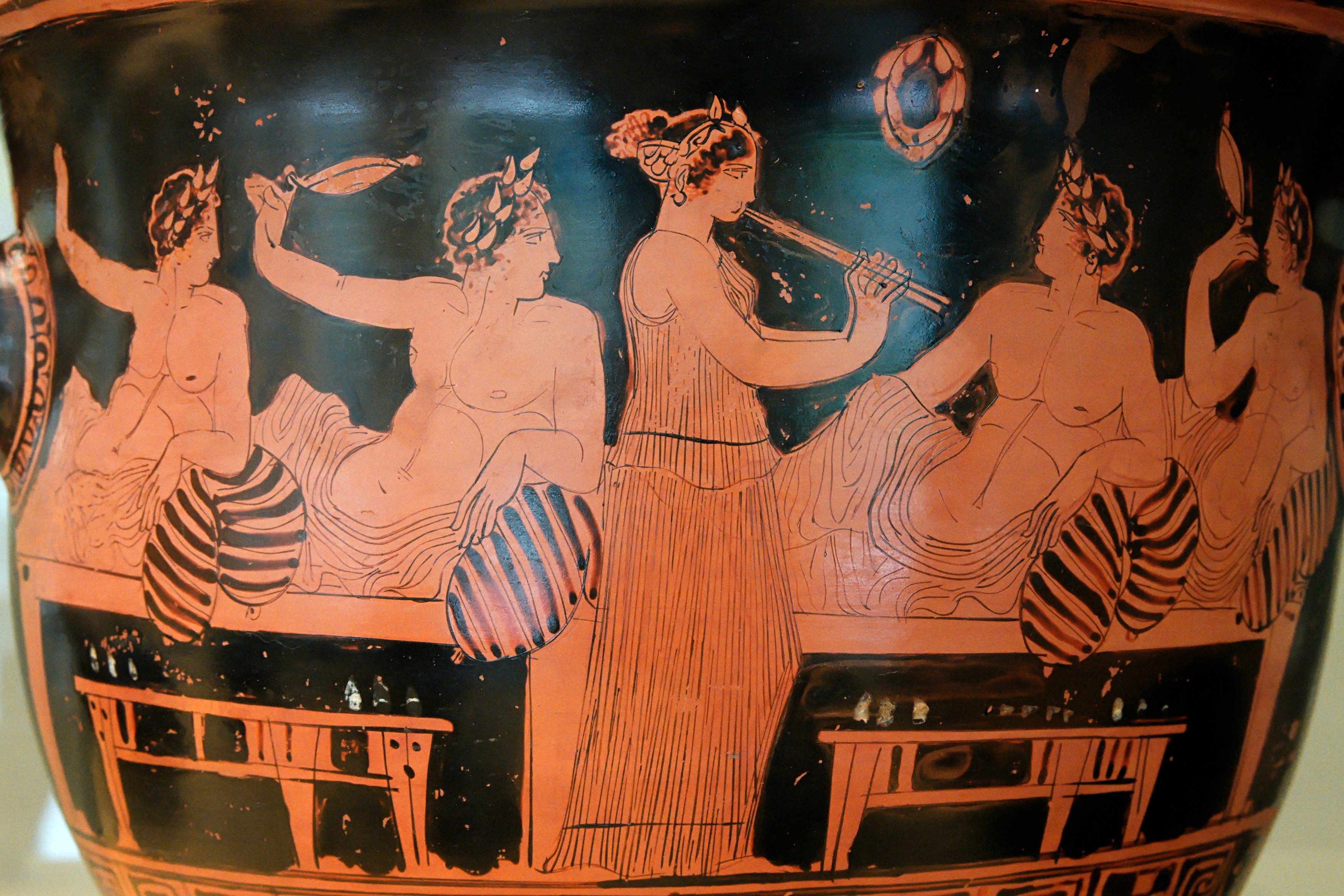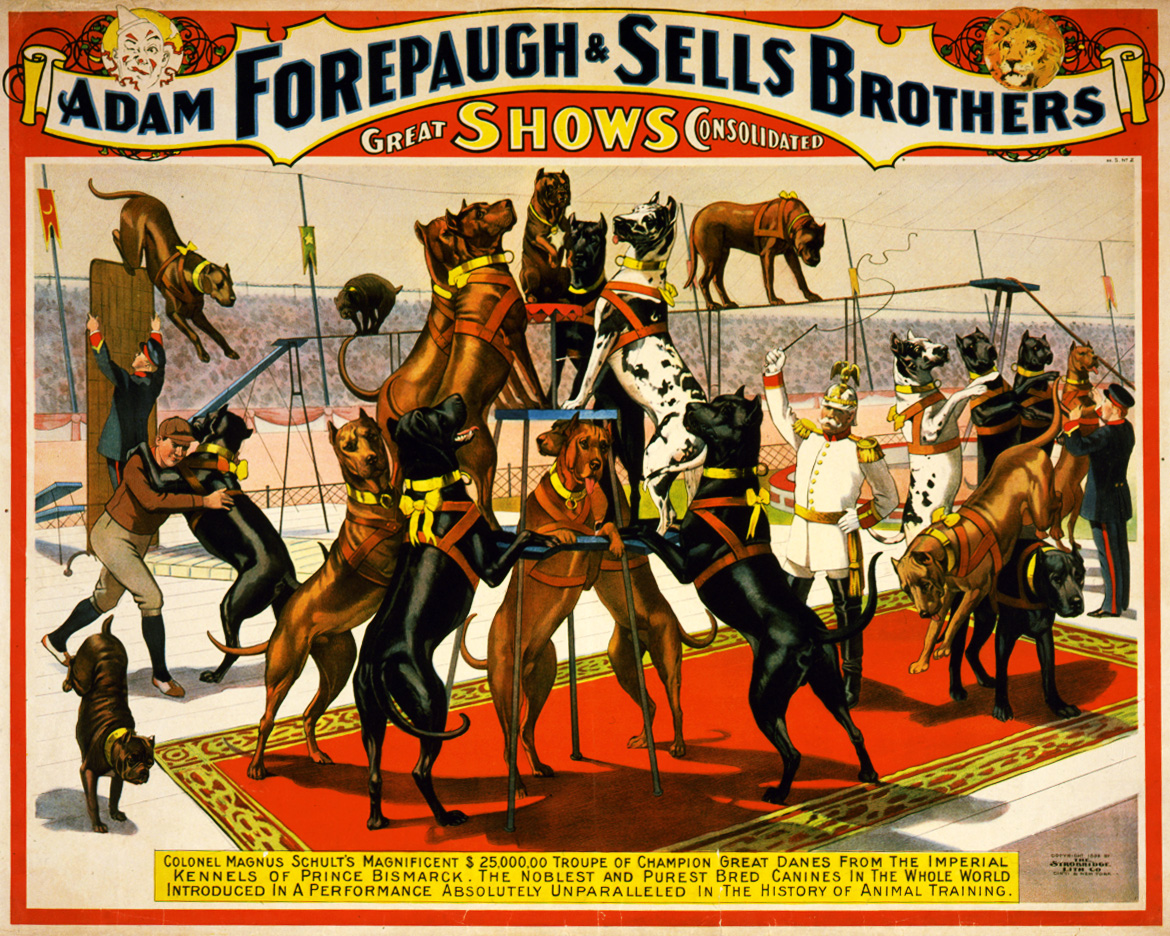|
Anastasini Circus
Anastasini Circus (Italian: Circo Anastasini) is an Italian entertainment company founded in 1877 by Lugi Biasini, Girolamo Biasini, Sidonia, and Antonia. . It is currently one of the oldest circus around. The Anastasini circus was an Italian travelling circus. The circus moved to the United States in 1980 when Renato and his family went to perform with Circus Vargas, the country's largest traveling circus under canvas at that time. The circus is currently in its 9th generation. Acts Pound Puppies - Luciano Anastasini and Gladis España Risley Act - Anastasini Brothers, Giuliano & Fabio Anastasini Aerial Rotating Cradle - Giovanni Anastasini & Irene España Anastasini Diabolos Anastasini Family Circus *1st Generation - Luigi Biasini, Girolamo Biasini, Sidonia, Antonia *2nd Generation - *3rd Generation - *4th Generation - *5th Generation - *6th Generation - *7th Generation - Renato Anastasini, Betty Anastasini, Orlanda Anastasini, Luciano Anastasini *8th Generation - Giovanni A ... [...More Info...] [...Related Items...] OR: [Wikipedia] [Google] [Baidu] |
Circus Vargas
Circus Vargas is an American circus based in California. It was built with the intent of bringing an old time circus to everyone; it is billed as one of the world's biggest traveling circuses still using a big top tent. Owned and operated by Katya Arata Quiroga and Nelson Quiroga, the circus produces a circus show throughout the western United States. History Clifford E. Vargas (1924–1989) founded Circus Vargas in 1969. Vargas was influenced to restart the big top tent circus from his childhood fascination with glamour and thrills of old circuses. He was a frequent spectator with big top tent circuses that visited his hometown of Livermore, California every year. Vargas, the son of Portuguese immigrants, grew up on a farm near Livermore. He got a job in Chicago as the ticket seller, doorman and later ringmaster. Vargas saved money, and in 1972 purchased controlling interest in the Miller-Johnson Circus. The show was small to start, but grew. Circus Vargas at its peak was using the ... [...More Info...] [...Related Items...] OR: [Wikipedia] [Google] [Baidu] |
Diabolo
The diabolo ( ; commonly misspelled ''diablo'') is a juggling or circus prop consisting of an axle () and two cups (hourglass/egg timer shaped) or discs derived from the Chinese yo-yo. This object is spun using a string attached to two hand sticks ("batons" or "wands"). A large variety of tricks are possible with the diabolo, including tosses, and various types of interaction with the sticks, string, and various parts of the user's body. Multiple diabolos can be spun on a single string. Like the Western yo-yo (which has an independent origin), it maintains its spinning motion through a rotating effect based on conservation of angular momentum. History Origin The Diabolo is derived from the Chinese yo-yo encountered by Europeans during the colonial era. However, the origin of the Chinese yo-yo is unknown. The earliest mention of the Chinese yo-yo is in the late Ming dynasty Wanli period (1572–1620), with its details well recorded in the book '' Dijing Jingwulue'' b ... [...More Info...] [...Related Items...] OR: [Wikipedia] [Google] [Baidu] |
Entertainment Companies Of Italy
Entertainment is a form of activity that holds the attention and interest of an audience or gives pleasure and delight. It can be an idea or a task, but is more likely to be one of the activities or events that have developed over thousands of years specifically for the purpose of keeping an audience's attention. Although people's attention is held by different things because individuals have different preferences, most forms of entertainment are recognisable and familiar. Storytelling, music, drama, dance, and different kinds of performance exist in all cultures and were supported in royal courts and developed into sophisticated forms, over time becoming available to all citizens. The process has been accelerated in modern times by an entertainment industry that records and sells entertainment products. Entertainment evolves and can be adapted to suit any scale, ranging from an individual who chooses a private entertainment from a now enormous array of pre-recorded produc ... [...More Info...] [...Related Items...] OR: [Wikipedia] [Google] [Baidu] |
Circuses
A circus is a company of performers who put on diverse entertainment shows that may include clowns, acrobats, trained animals, trapeze acts, musicians, dancers, hoopers, tightrope walkers, jugglers, magicians, ventriloquists, and unicyclists as well as other object manipulation and stunt-oriented artists. The term ''circus'' also describes the performance which has followed various formats through its 250-year modern history. Although not the inventor of the medium, Philip Astley is credited as the father of the modern circus. In 1768, Astley, a skilled equestrian, began performing exhibitions of trick horse riding in an open field called Ha'Penny Hatch on the south side of the Thames River, England. In 1770, he hired acrobats, tightrope walkers, jugglers and a clown to fill in the pauses between the equestrian demonstrations and thus chanced on the format which was later named a "circus". Performances developed significantly over the next fifty years, with large-scale ... [...More Info...] [...Related Items...] OR: [Wikipedia] [Google] [Baidu] |
Buskers
Street performance or busking is the act of performing in public places for gratuities. In many countries, the rewards are generally in the form of money but other gratuities such as food, drink or gifts may be given. Street performance is practiced all over the world and dates back to antiquity. People engaging in this practice are called street performers or buskers in the United Kingdom. Outside of New York, ''buskers'' is not a term generally used in American English. Performances are anything that people find entertaining, including acrobatics, animal tricks, balloon twisting, caricatures, clowning, comedy, contortions, escapology, dance, singing, fire skills, flea circus, fortune-telling, juggling, magic, mime, living statue, musical performance, one man band, puppeteering, snake charming, storytelling or reciting poetry or prose, street art such as sketching and painting, street theatre, sword swallowing, ventriloquism and washboarding. Buskers may be solo pe ... [...More Info...] [...Related Items...] OR: [Wikipedia] [Google] [Baidu] |




